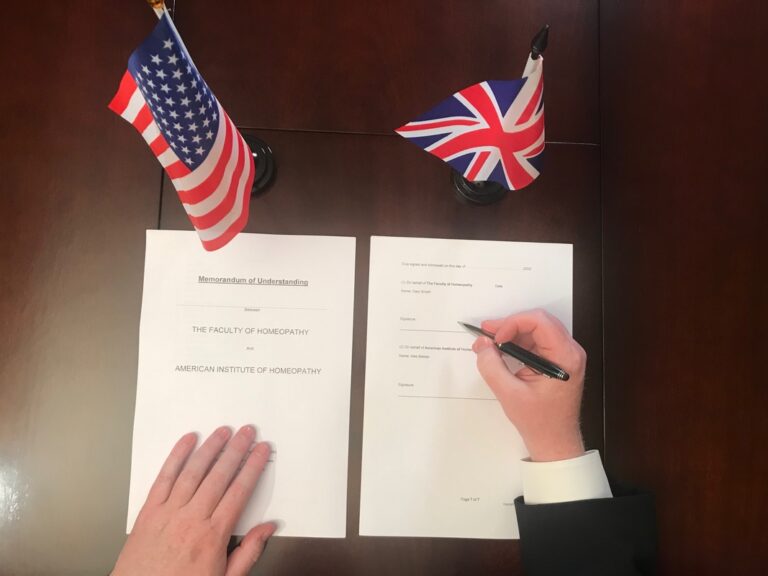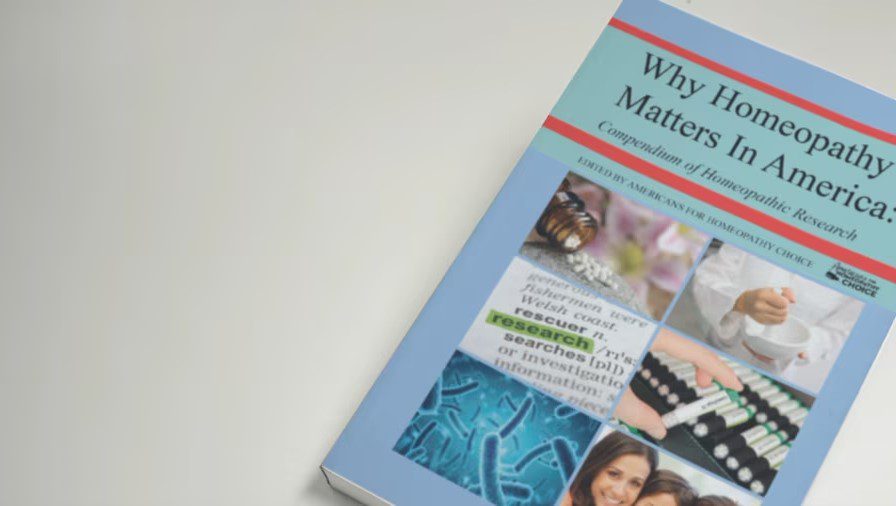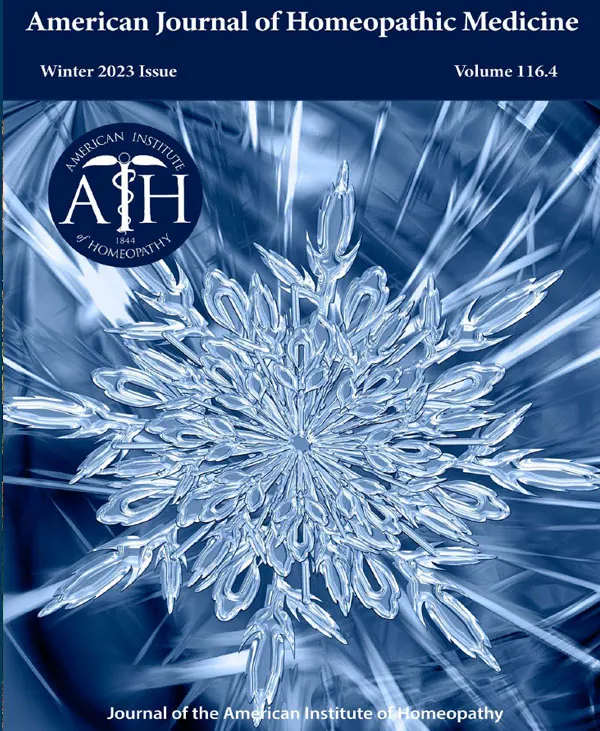
NCCIH Strategic Plan
In response to NCCIH’s request for information soliciting input for the new strategic plan, the American Institute of Homeopathy (AIH), the oldest extant national medical professional organization in the United States would like to offer several recommendations for priority research areas in the field of homeopathy. We are aware that homeopathy has largely been ignored by NIH, however, we believe that recent research from several countries, and the recent FDA public hearing, point to a clear need to study further the bioenergetic effects of homeopathic medicines. The NCCIH is the most appropriate Institute to fund these studies.
Studies in the following priority areas would help to further advance our understanding of homeopathy:
- Basic mechanistic research. Recent work has identified nanoparticles in some high dilution homeopathic medicines at concentrations capable of exerting biological effects (1,2). Additional studies have demonstrated effects of homeopathic medicines in vitro (3,4). Further studies building on this provocative work and identifying mechanisms are needed.
- Comparative effectiveness research via longitudinal data collection. Data from Europe suggests favorable long-term outcomes with homeopathic care across a large population (5) and reduction in unnecessary antibiotic use (6). Currently there is little knowledge regarding the types of conditions seen by homeopathic providers in the United States or the results they are obtaining in clinical practice. Prospective studies of homeopathic care in the United States in the form of a practice-based research network or enrolling of patients seen at individual providers’ offices through a central site could yield rich data on homeopathic care in the U.S. Such studies should incorporate the NIH PROMIS measures better to capture patient experiences. We would also recommend seeking expert homeopathic input on the next round of NHIS CAM questions to collect more relevant and meaningful data.
- Identify and fund high priority areas for pilot clinical trials based on promising clinical or trial data that has already been reported. Such studies should focus on symptom improvement (a priority area for NCCIH) where conventional medicine has little to offer. For example, prior studies of homeopathy for patients with fibromyalgia (7) or mild traumatic brain injury [previously funded by NIH (8)] have suggested benefits. One study demonstrated that addition of homeopathic potassium dichromate to conventional care may help some ICU patients wean more quickly from a ventilator resulting in a 3 day shorter ICU stay on average (9), an intervention that could potentially save the healthcare system millions of dollars annually. Other reports have suggested that the addition of homeopathic care to cancer treatment protocols may be of benefit (10,11) and that homeopathic treatment may be a useful adjunct for reducing the frequency of symptomatic urinary tract infections in individuals with spinal cord injury (12).
Thank you for your consideration. If NCCIH has further questions regarding priority areas for research in homeopathy, we would be happy to provide further topical expertise and advise the Institute.
Sincerely,
Ron Whitmont, MD
President, American Institute of Homeopathy
References:
- Chikramane PS, Suresh AK, Bellare JR, Kane SG. Extreme homeopathic dilutions retain starting materials: A nanoparticulate perspective. Homeopathy J Fac Homeopathy. 2010 Oct;99(4):231 42.
- Das S, Das J, Samadder A, Bhattacharyya SS, Das D, Khuda-Bukhsh AR. Biosynthesized silver nanoparticles by ethanolic extracts of Phytolacca decandra, Gelsemium sempervirens, Hydrastis canadensis and Thuja occidentalis induce differential cytotoxicity through G2/M arrest in A375 cells. Colloids Surf B Biointerfaces. 2013 Jan 1;101:325 36.
- Mukherjee A, Boujedaini N, Khuda-Bukhsh AR. Homeopathic Thuja 30C ameliorates benzo(a)pyrene-induced DNA damage, stress and viability of perfused lung cells of mice in vitro. J Integr Med. 2013 Nov;11(6):397 404.
- Frenkel M, Mishra BM, Sen S, Yang P, Pawlus A, Vence L, et al. Cytotoxic effects of ultra-diluted remedies on breast cancer cells. Int J Oncol. 2010 Feb;36(2):395 403.
- Witt CM, Lüdtke R, Mengler N, Willich SN. How healthy are chronically ill patients after eight years of homeopathic treatment?–Results from a long term observational study. BMC Public Health. 2008;8:413.
- Grimaldi-Bensouda L, Bagaud B, Rossignol M, Avouac B, Lert F, Rouillon F, et al. Management of upper respiratory tract infections by different medical practices, including homeopathy, and consumption of antibiotics in primary care: the EPI3 cohort study in France 2007-2008. PloS One. 2014;9(3):e89990.
- Boehm K, Raak C, Cramer H, Lauche R, Ostermann T. Homeopathy in the treatment of fibromyalgia–a comprehensive literature-review and meta-analysis. Complement Ther Med. 2014 Aug;22(4):731 42.
- Chapman EH, Weintraub RJ, Milburn MA, Pirozzi TO, Woo E. Homeopathic treatment of mild traumatic brain injury: A randomized, double-blind, placebo-controlled clinical trial. J Head Trauma Rehabil. 1999 Dec;14(6):521 42.
- Frass M, Dielacher C, Linkesch M, Endler C, Muchitsch I, Schuster E, et al. Influence of potassium dichromate on tracheal secretions in critically ill patients. Chest. 2005 Mar;127(3):936 41.
- Gaertner K, Müllner M, Friehs H, Schuster E, Marosi C, Muchitsch I, et al. Additive homeopathy in cancer patients: Retrospective survival data from a homeopathic outpatient unit at the Medical University of Vienna. Complement Ther Med. 2014 Apr;22(2):320 32.
- Banerji P, Campbell DR, Banerji P. Cancer patients treated with the Banerji protocols utilising homoeopathic medicine: a Best Case Series Program of the National Cancer Institute USA. Oncol Rep. 2008 Jul;20(1):69 74.
- Pannek J. Pilot study demonstrates effectiveness of homeopathy in treating symptomatic urinary tract infections in patients with spinal cord injury. HRI Res Artic [Internet]. 2014;25(Autumn). Available from: https://www.hri-research.org/wp-content/uploads/2014/09/HRI_ResearchArticle_25_Pannek_UTIs.pdf
Latest News & Updates
Latest Issue of the AJHM
AJHM – Winter 2023
Volume 116 Number 4
Table of Contents
- Editorial: In this Issue
- Homeopathic PuZZle?
- A Case of Erectile Dysfunction and Anejaculation in a Diabetic Patient
- Iron and Its Salts: Materia Medica and Illustration
- Suppression in the Organon
- An Appreciation of Jacques Jouanny’s Life and a Review of His Opus “The Essentials of Homeopathic Therapeutics”





